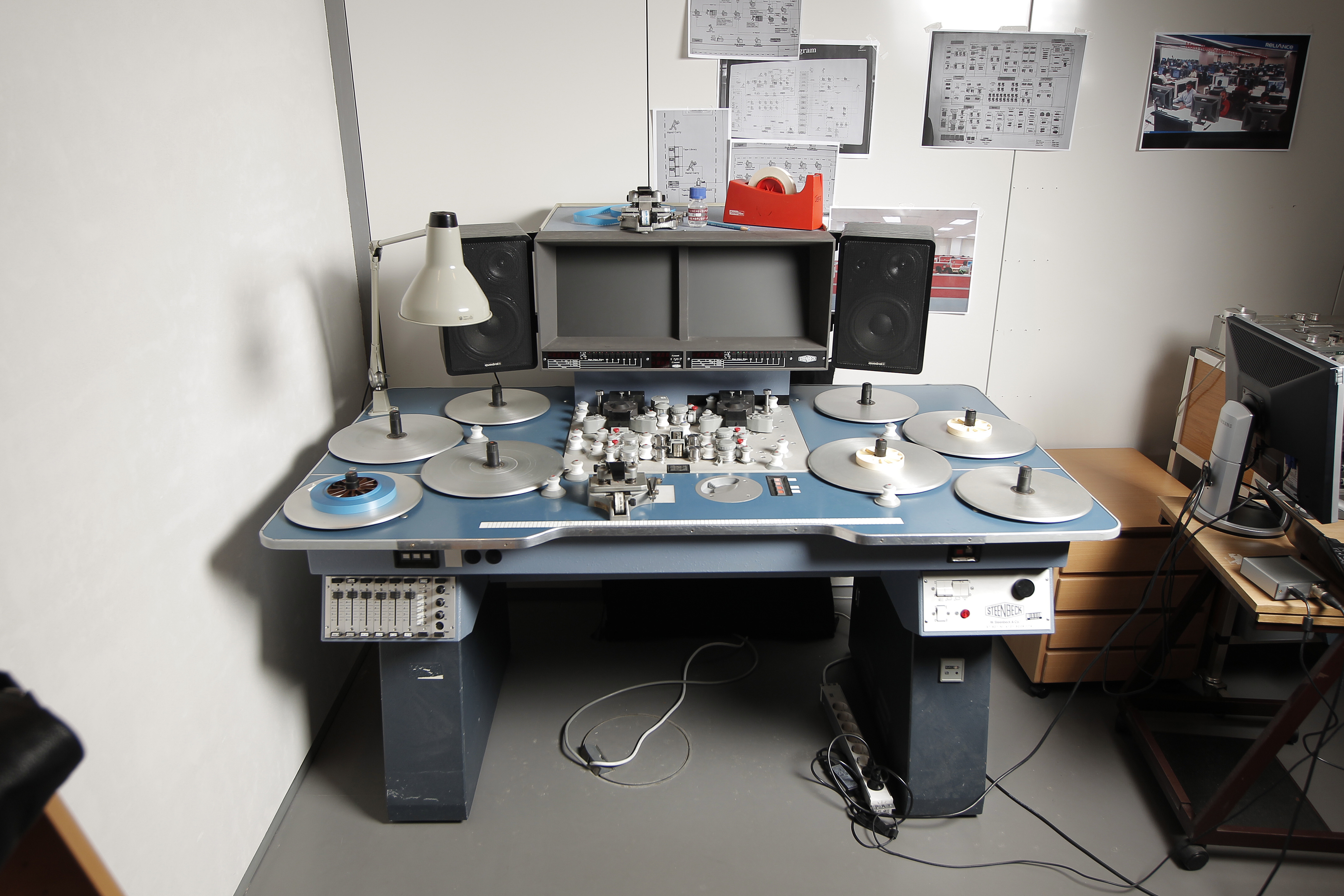Research the development of editing technology
Create a blog post that outlines the development of editing technology.
This post must include mention of:
• Early editing - cutting
• Moviola
• Flatbed Edit Suites
• Linear and Non-Linear editing
• Online and Offline Editing
• The Digital Era (CMX-600, Edit Droid and Avid 1)
• Modern editing platforms (Final Cut, Premiere Pro)
• Film and file types
Include mention of key texts affected by the developments in technology. You must
include videos and images that help illustrate your answers
Cutting
Cutting, the most basic edit in film, is a visual transition where one shot is instantaneously replaced by another on screen. In early films, film makers were cautious of editing as they thought it would cause confusion within audiences, however upon trial and error they found by cutting/splicing scenes, they could form more complex narratives.
Moviola
 A moviola is a device that allows a film editor to view a film whilst editing. It was the first machine for motion picture editing when it was invented by Iwan Serrurier in 1924. The machine allowed editors to study individual frames in their cutting room to help them determine where the best cut could take place.
A moviola is a device that allows a film editor to view a film whilst editing. It was the first machine for motion picture editing when it was invented by Iwan Serrurier in 1924. The machine allowed editors to study individual frames in their cutting room to help them determine where the best cut could take place.Flatbed edit suites
A flatbed edit suite was what followed after moviola, it's another film editor used with motion picture. The images and sound rolls are loaded onto separate plates which move individually or can be locked together to maintain a synchronised transition between the sound and the image.
Linear and Non-linear editing
Linear editing is a post-production process of selecting, arranging and altering images and sound in a predetermined sequence(tape-to-tape) it was the first format to edit video tapes to begin with and was used a lot in live TV.
Non-Linear Editing became available and gave a new way of editing in the 90's, it allowed the original content to be kept with the edits themselves are edited by the software within, each time the audio audio or visual is rendered it is copied from the original therefore keeping the original safe.
Online and Offline Editing
Offline is very similar to non linear editing in that it doesn't alter the original, it is copied and then edited. The digital revolution has made the process quicker for the editor when they moved from tape video cutting to computer editing software. Online editing is the next step, online editors allow an editor to edit video tape recordings using computer software.
The Digital Era
CMX 600
The first Non-Linear editing system, it was introduced in 1971 by CMX Systems, a joint company of CBS and Memorex, it was referred to as RAVE, or Random Access Video Editor. The 600 had a console with two black and white monitors, as well as a light pen which was used to control the system. The right monitor played the preview video, and was used by the editor to make cuts and to edit decisions by using the light pen to select options, which were over-laid on the image, while the left screen played the edited video. It recorded and played back video in analogue on disk packs the size of washing machines.
Edit Droid The Edit Droid is a computerised analogue NLE system which was developed by Lucasfilm spin-off company, the Droid Works and Convergence Corporation who formed a joint company. It existed through the mid 80’s to the early 90’s. Edit Droid debuted at the National Association of Broadcasters 62nd Annual meeting in 1984, alongside the Montage Picture Processor which would be its competitor for many years. Edit Droid has three screens, one Sun-1 computer display, one small preview video monitor and a large rear-projected monitor containing the cut. It pioneered the use of graphical display for editing introducing the timeline as well as picture icons to identify raw video clips.
Avid 1 Avid 1 was based on an Apple Macintosh II computer with special hardware and software designed by Avid installed. By the early 1990s, Avid/1 began replacing machines like the Moviola and Steenbeck flatbed editors, allowing editors to edit easier. The first feature film edited using Avid/1 was Let’s Kill All The Lawyers (1992) directed by Ron Senkowski. By 1994, only three feature films had been edited using Avid/1, by 1995, dozens had made the switch, showing its popularity.
Modern Editing Software
Premier Pro
A timeline based video editing software app, used by BBC and CNN for feature films such as Gone Girl, Captain Abu Raed, and Monsters. Premier Pro’s Plug-ins allows for importing and exporting formats not supported by QuickTime and others, and supports a wide variety of video and audio files.
Final Cut Pro A series of non-linear video editing software developed by Macromedia Inc. and later by Apple, the most recent version runs on Mac OS computers. The software allows the editor to transfer video onto a hard drive to be edited, processed and rendered to a variety of formats.
https://emilywheelhousehnccreativemedia.wordpress.com/2016/08/31/development-of-editing-technology/
moviola image
https://rowlandediting.wordpress.com/history-of-video-editing-and-techniques/
flatbed edit suite image
https://en.wikipedia.org/wiki/Steenbeck

No comments:
Post a Comment